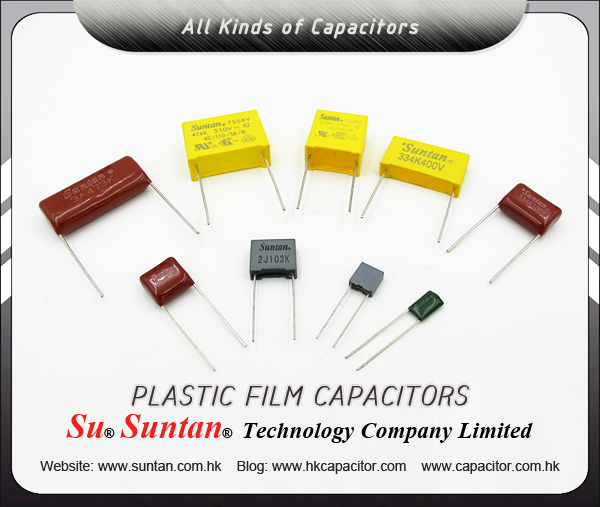Suntan Presents the Last Five Plastic Film Capacitors
Suntan Technology Company Limited
---All Kinds of Capacitors
In the last blog, we describesd four types of plastic film capacitaors of medium, application and disadvantage. Suntan presents the last five plastic film capacitors for our customers today.
| Capacitor type | Dielectric used | Features/applications | Disadvantages |
| Polypropylene Plastic Film Capacitors | Polypropylene | Has become the most popular capacitor dielectric[citation needed]. Extremely low dissipation factor, higher dielectric strength than polycarbonate and polyester films, low moisture absorption, and high insulation resistance. May use plates of foil, metalized film, or a combination. Film is compatible with self-healing technology to improve reliability. Usable in high frequency applications due to very low dielectric losses. Larger value and higher voltage types from 1 to 100μF at up to 440V AC are used as run capacitors in some types of single phase electric motors. | More susceptible to damage from transient over-voltages or voltage reversals than oil-impregnated Kraft paper for pulsed power energy discharge applications. |
| Polysulphone Plastic Film Capacitors | Polysulfone | Similar to polycarbonate. Can withstand full voltage at comparatively higher temperatures. Moisture pick-up is typically 0.2%, limiting its stability. | Very limited availability and higher cost |
| PTFE Fluorocarbon (TEFLON) Film Capacitors | Polytetra- fluoroethylene | Lowest loss solid dielectric. Operating temperatures up to | Large size (due to low dielectric constant), and higher cost than other film capacitors. |
| Polyamide Plastic Film Capacitors | Polyamide | Operating temperatures of up to | Large size and high cost. |
| Metalized Plastic Film Capacitors | Polyester or Polycarbonate | Reliable and significantly smaller in size. Thin metalization can be used to advantage by making capacitors "self healing". | Thin plates limit maximum current carrying capability. |
